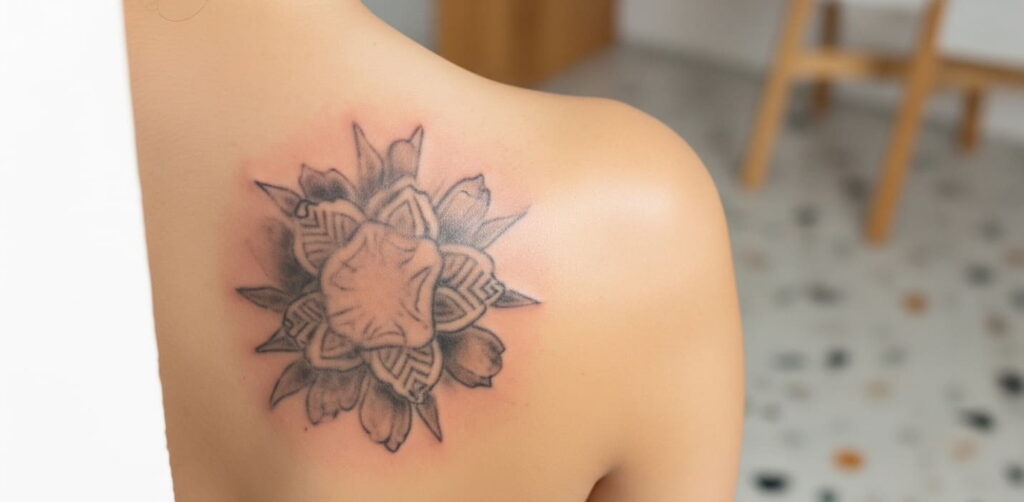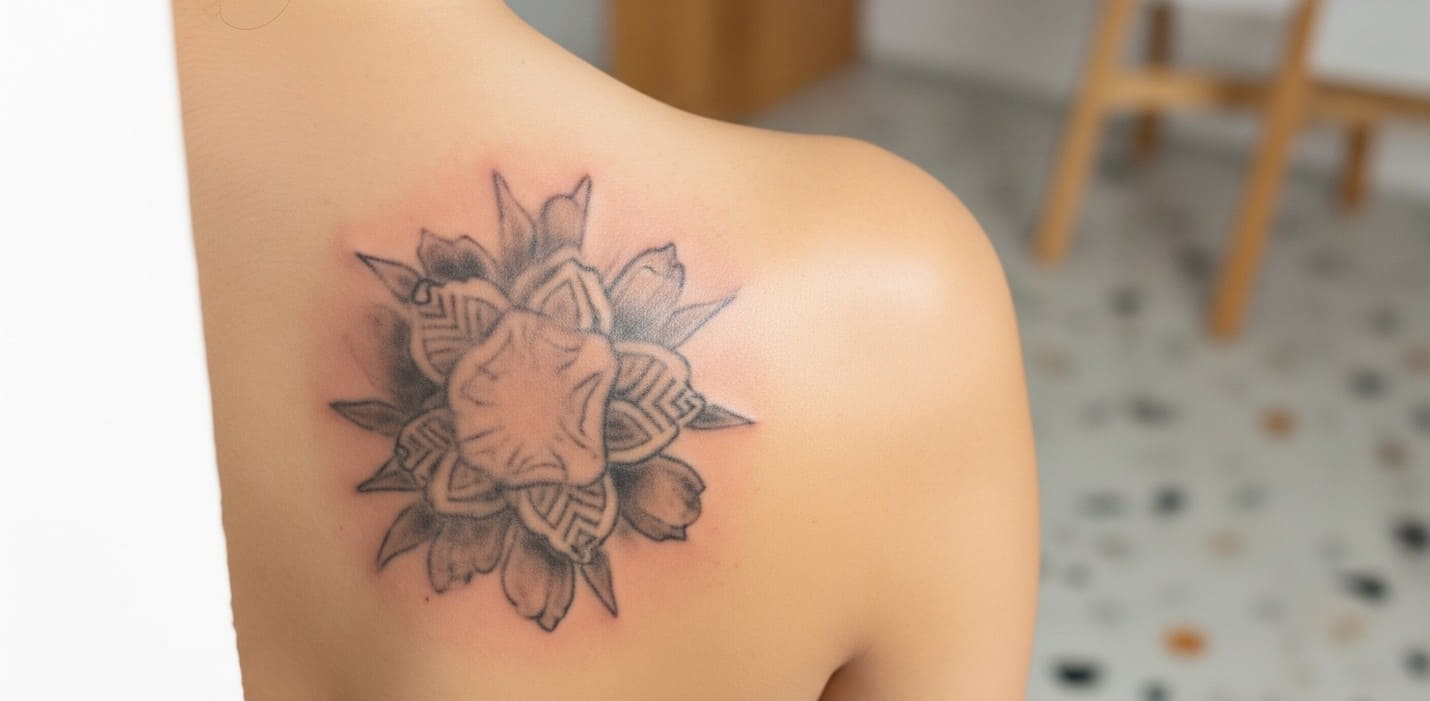How to Fade a Tattoo Safely at Home Before a Cover Up (Myths vs Facts)
Whether it’s a faded memory, a shift in style, or a reminder of a time best left behind, many individuals in Miami find themselves wanting a tattoo gone—or at least, covered up. But here’s the challenge: fading a tattoo without damaging your skin is not as simple as a few Google searches might suggest. Myths are everywhere, and for those just beginning to explore professional cover-up options, misinformation can feel both overwhelming and risky.
This article explores the truth behind common myths about fading tattoos, highlights what actually works (and what doesn’t), and outlines how to prepare your skin for a professional cover-up—safely and effectively.
Why Some Tattoos Need Fading First
Some tattoos are just too bold to cover up cleanly without some prior fading. Many professional cover-up artists in Miami—and elsewhere—recommend initial fading in cases where:
- Ink is heavily saturated or too dark to blend with a new design
- Lines are overly thick, making it harder to camouflage
- Contrast or color complexity might overpower the cover-up art
Fading doesn’t mean removing the tattoo completely. In fact, full removal is rarely necessary. Lightening the existing ink can help artists work more freely with design, detail, and placement. It expands creative possibilities and helps achieve cleaner, more professional results.
+——————————————————————————————————-+
💡 Quick Takeaways
- Why fade?: Heavily inked or dark tattoos often require lightening for optimal cover-up outcomes.
- Better options: Fading expands design flexibility and allows cleaner, more artistic results.
- Not full removal: Most artists don’t require complete tattoo removal—partial fading often suffices.
+——————————————————————————————————-+
Myths About Tattoo Fading at Home
When it comes to fading a tattoo without professional intervention, some beliefs are not just ineffective—they can be dangerous.
Myth #1: “Lemon juice fades tattoos”
This idea circulates widely online, but there’s no scientific backing. Lemon juice can irritate the skin and cause sensitivity or peeling, but it doesn’t reach the ink that sits in the dermis layer. Worse, using it aggressively might lead to chemical burns or long-term skin trauma—issues that make professional cover-ups far more complicated.
Myth #2: “Exfoliating will erase the ink”
Scrubbing with loofahs, salt, or harsh exfoliants may sound harmless, but excessive friction can inflame the skin and cause microtears. While it might temporarily brighten the surface, it has no meaningful impact on deep ink. Worse still, damaged or inflamed skin can be unsuitable for a cover-up—artists need fully healed, untraumatized skin to work effectively.
Myth #3: “Sunlight will help fade it faster”
Prolonged sun exposure does break down some ink particles—but at the cost of skin health. Sun damage weakens collagen, increases the risk of discoloration, and can permanently scar or age skin prematurely. The short-term fade isn’t worth the long-term damage.
+——————————————————————————————————-+
💡 Quick Takeaways
- Lemon juice is a myth: It irritates skin but doesn’t impact dermal ink layers.
- Aggressive exfoliation is harmful: It increases inflammation without fading tattoos effectively.
- Sun damage is not a solution: It may lighten ink slightly but causes lasting skin harm.
+——————————————————————————————————-+
Facts: What Actually Supports Safe Tattoo Fading
For those in the early stages of considering a cover-up, safe fading doesn’t mean active removal—it means supporting your skin’s natural fading process while keeping it healthy and intact.
Here’s what’s worth knowing:
- Skin regeneration takes time
Tattoos fade naturally over the years as the immune system breaks down ink particles. Supporting your body through general wellness—staying hydrated, avoiding UV exposure, eating well—can support this long process, although the effects may be subtle. - Protecting the skin is essential
Using a quality, fragrance-free moisturizer (not overusing it, though) can help maintain skin elasticity and hydration. Well-moisturized skin heals better and is easier for artists to work on. - Professional consultation changes everything
Before considering any type of fading—natural or professional—it’s smart to speak with a qualified cover-up artist. They can assess whether fading is necessary, how much is needed, and whether a cover-up is possible in the current state. In Miami, many highly rated artists known for their work as the best cover up tattoo artist in Miami prefer to evaluate the skin directly before recommending any further action.
+——————————————————————————————————-+
💡 Quick Takeaways
- Natural fading happens slowly: Healthy lifestyle habits support long-term ink breakdown.
- Skin condition matters most: Hydrated, untraumatized skin is optimal for cover-ups.
- Artist input is key: Consultations guide whether fading is necessary before proceeding.
+——————————————————————————————————-+
Getting Artist-Ready: What Cover-Up Artists Want to See
Cover-up tattoo artists in Miami—especially the best cover up tattoo artist in Miami—often emphasize one thing above all else: skin quality. Ink can be worked around; scarring or damaged tissue cannot.
Here’s what professionals typically look for:
- Healed skin: No recent trauma, burns, or open wounds
- Even skin tone and texture: No flaking, no inflammation
- Ink that’s been faded—or at least softened: Especially if the new design requires light ink or fine linework
Helpful preparation questions to ask during a consultation:
- “Is fading necessary before a cover-up in my case?”
- “Will my current skin condition support a solid result?”
- “Should I wait a few months to see how natural fading progresses?”
If laser fading or professional lightening has recently been done, most artists recommend waiting 6–8 weeks before tattooing over the area. This allows the skin time to fully heal and prevents uneven ink absorption or complications. A best cover up tattooist will always want the skin to be in its best possible condition before starting.
+——————————————————————————————————-+
💡 Quick Takeaways
- Skin health comes first: No scarring, irritation, or fresh wounds
- Fading may help but isn’t always required: Artist consultation determines the best next step
- Wait time matters: Post-fading skin should rest 6–8 weeks before a new tattoo
+——————————————————————————————————-+

Conclusion
Fading a tattoo in preparation for a cover-up isn’t about scrubbing, bleaching, or burning the past away—it’s about preserving the skin’s health and making space for something new. Myths about home fading can do more harm than good, while natural skin support and professional guidance pave the way for transformation.
For those considering a cover-up, the best first step is to consult with a skilled artist. In Miami, that means connecting with the best cover up tattoo artist in Miami—someone experienced in evaluating faded tattoos and understanding what works best for each individual case.
Frequently Asked Questions (FAQ)
Q: Do I need to fully remove my old tattoo before getting a cover-up?
A: No. Most artists don’t require full removal. Partial fading often expands design options and allows for a cleaner, more professional cover-up.
Q: How long should I wait after laser fading before getting a cover-up?
A: Generally, artists recommend waiting 6–8 weeks after professional treatment to ensure full healing. Always follow your artist’s advice.
Frequently Unasked Questions (FUQ)
Q: Can over-moisturizing a tattoo help it fade?
A: No. While good moisturization supports skin health, it doesn’t impact tattoo pigment or fading speed.
Q: What happens if I try fading and damage the skin?
A: Damaged skin may develop scar tissue, which can interfere with how new ink sits and lead to uneven results.
Q: Want to know if your tattoo is ready for a cover-up?
A: Schedule a low-pressure consultation with a best cover up tattooist in Miami to evaluate your options and next steps—your skin (and your next tattoo) will thank you.

